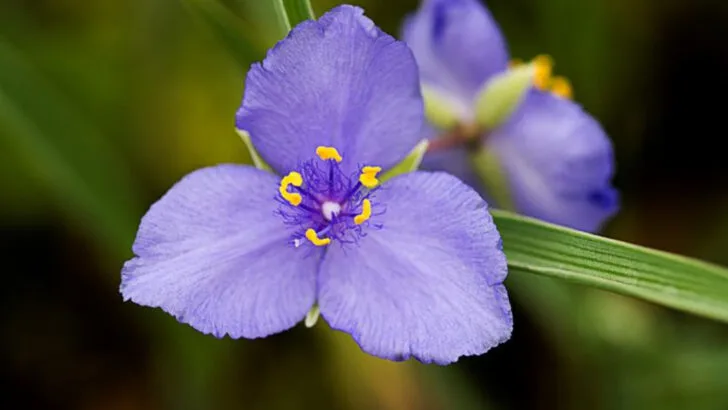When you think of “exotic” plants, you might picture something tropical, rare, or far from home. But what if we told you that some of the most lush, dramatic, and show-stopping plants might already be native to your own region? That’s right—many plants with bold leaves, vivid colors, or sculptural shapes that feel like they belong in a rainforest are actually growing happily just down the road.
These native beauties don’t just look good—they also thrive with less effort, because they’ve evolved to handle your exact climate, soil, and rainfall. That means less watering, fewer pests, and zero fuss. While they may resemble plants from distant lands, these stunners are deeply rooted in your local ecosystem. And by planting them, you’re not only turning heads—you’re also supporting pollinators, biodiversity, and sustainability.
So, if you’re craving a garden that feels like a vacation without leaving your zip code, this list is for you. These 18 plants will give your space an exotic edge, but they’re native through and through. Whether you’ve got a city balcony or a backyard oasis, you can enjoy wild beauty that doesn’t fight your environment—it flourishes in it.
Eastern Redbud
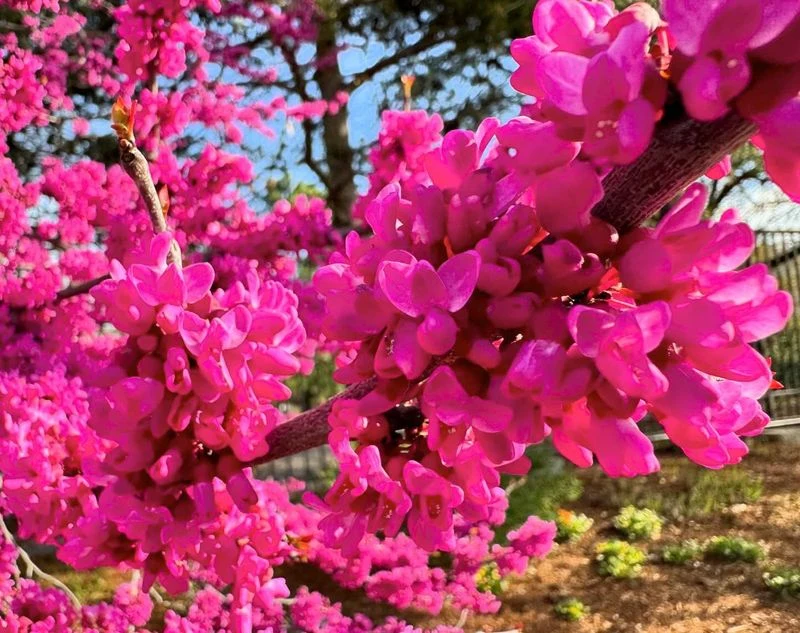
With heart-shaped leaves and vibrant pink blossoms, the Eastern Redbud is a herald of spring. Often seen gracing gardens and parks, its flowers appear before the foliage, offering a striking silhouette against a clear spring sky. Native to the eastern United States, this tree not only attracts the eye but also supports local wildlife including bees and butterflies. Its adaptability to various soil types makes it a versatile choice for gardeners. Despite its exotic appearance, this tree is a local gem, making it both a practical and visually appealing addition to any landscape.
Pawpaw
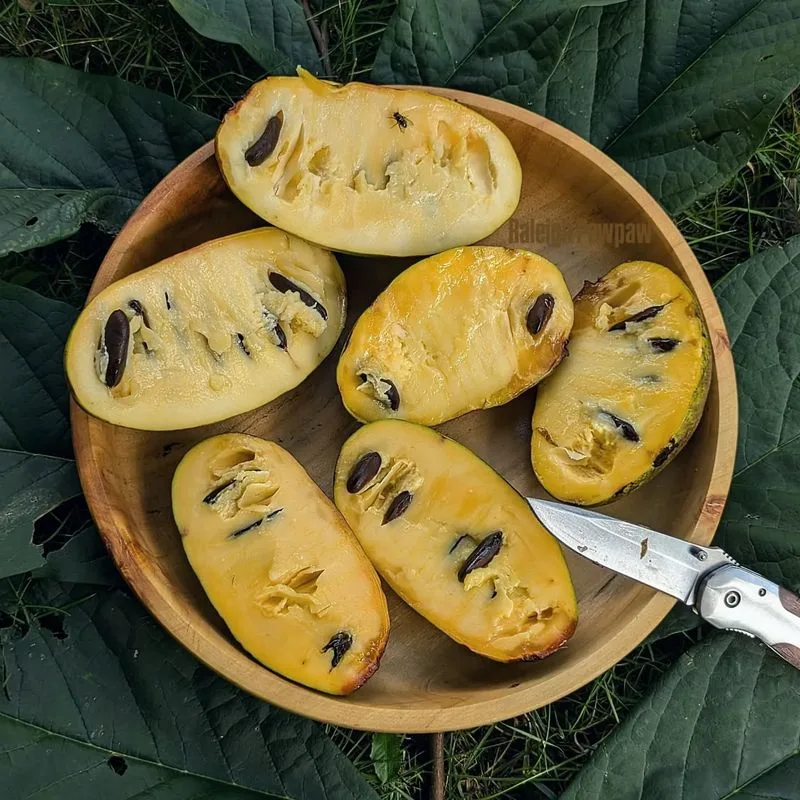
The Pawpaw tree, with its large, lush leaves and custard-like fruit, gives a tropical feel to any garden. Despite this exotic facade, Pawpaws are native to the temperate woodlands of North America. The fruit, often compared to bananas and mangos, offers a delicious treat for both humans and wildlife. With a rich history among Native American cultures, this tree was a staple long before modern cultivation. Its ability to thrive in shaded areas adds to its appeal, providing an unexpected tropical touch to your backyard without the need for extensive care.
Blue Wild Indigo
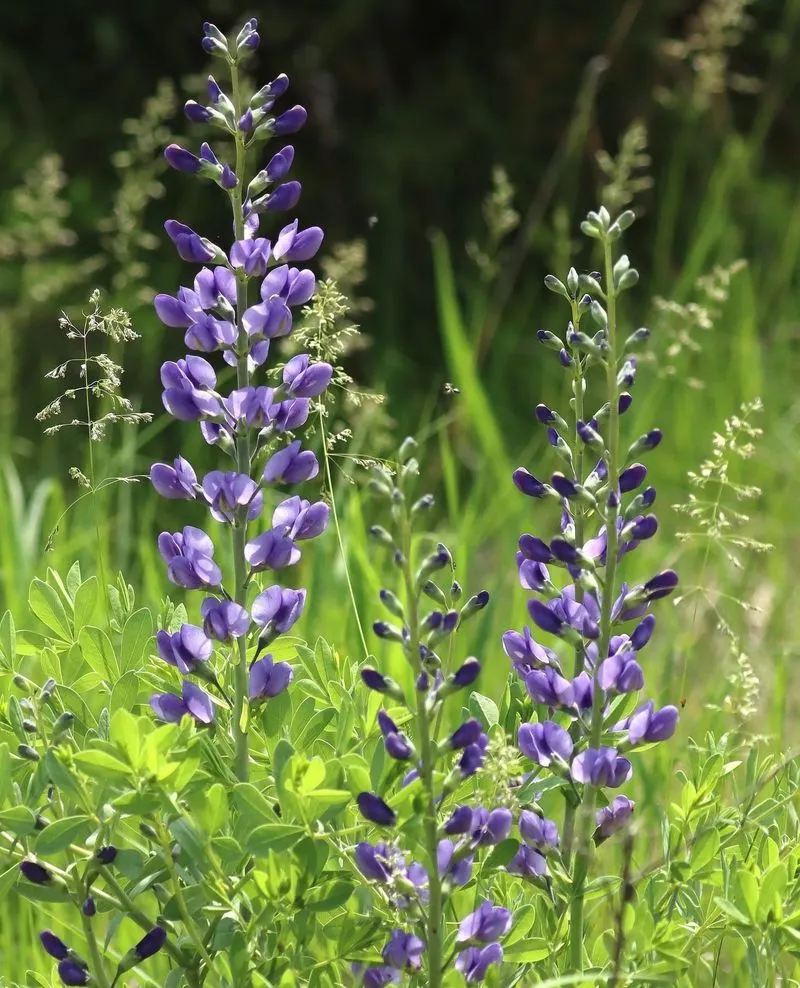
Blue Wild Indigo stands tall with its striking blue-purple flowers, adding a pop of color to meadows and gardens alike. Native to the prairies of North America, this resilient plant thrives in dry, rocky soils where others may falter. Its deep roots not only stabilize the soil but also enrich it, making it an unsung hero of native landscaping. While its flowers impress, the plant also serves ecological purposes, acting as a host for various butterfly species. Blue Wild Indigo blends beauty and function, ensuring it remains a cherished native jewel.
Spiderwort
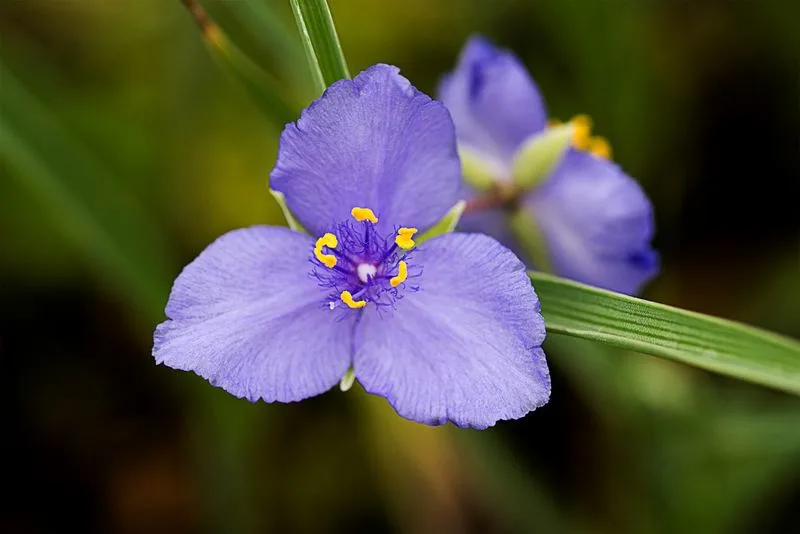
Known for its vibrant three-petaled blooms, Spiderwort adds a whimsical touch to gardens. These flowers open in the morning and close by afternoon, presenting a daily spectacle of color. Native to the eastern United States, Spiderwort is as hardy as it is enchanting, enduring a range of climates and soil conditions. The plant’s name derives from the sticky secretion resembling a spider’s web, adding an element of intrigue. Perfect for borders or wildflower gardens, Spiderwort’s low maintenance needs make it a gardener’s delight, offering both beauty and curiosity.
Indian Pink
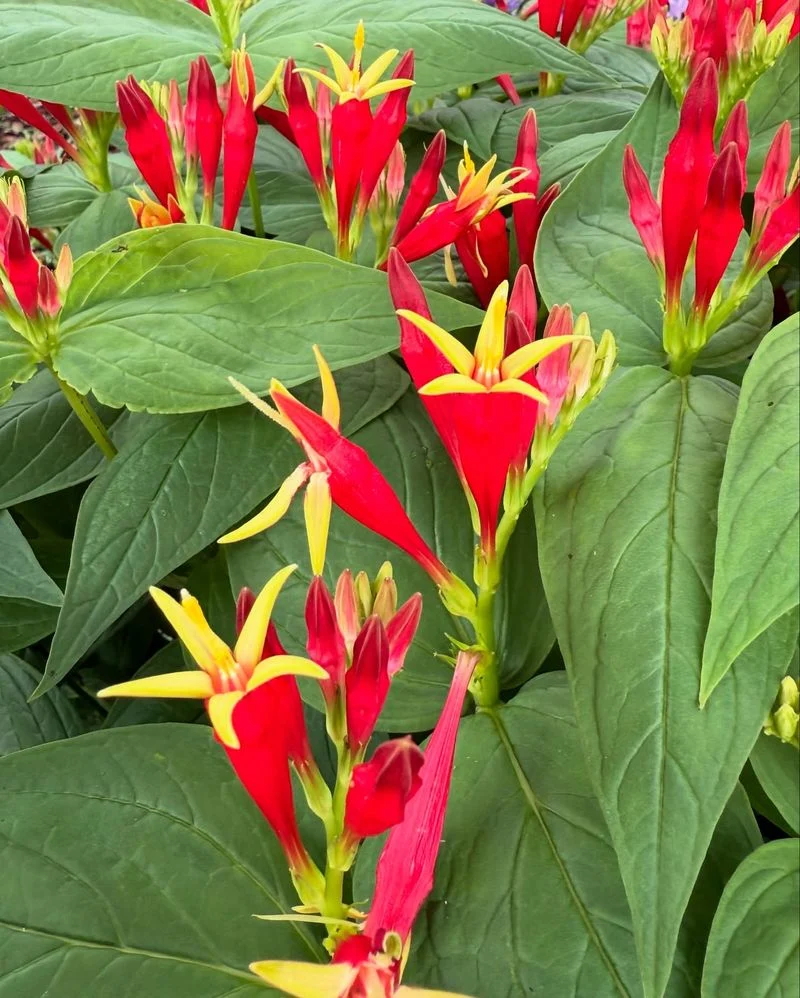
Indian Pink offers a bold contrast with its bright red tubular flowers and yellow interiors, a true showstopper in shaded gardens. This native perennial, thriving in the woodlands of the southeastern United States, attracts hummingbirds with its vivid colors and nectar. Its compact size makes it ideal for small garden spaces or as a vibrant underplanting. Indian Pink’s resilience and beauty make it a sought-after plant for gardeners wishing to add a splash of color without overwhelming their space. This plant is a testament to the exotic allure of native flora.
Jack-in-the-Pulpit
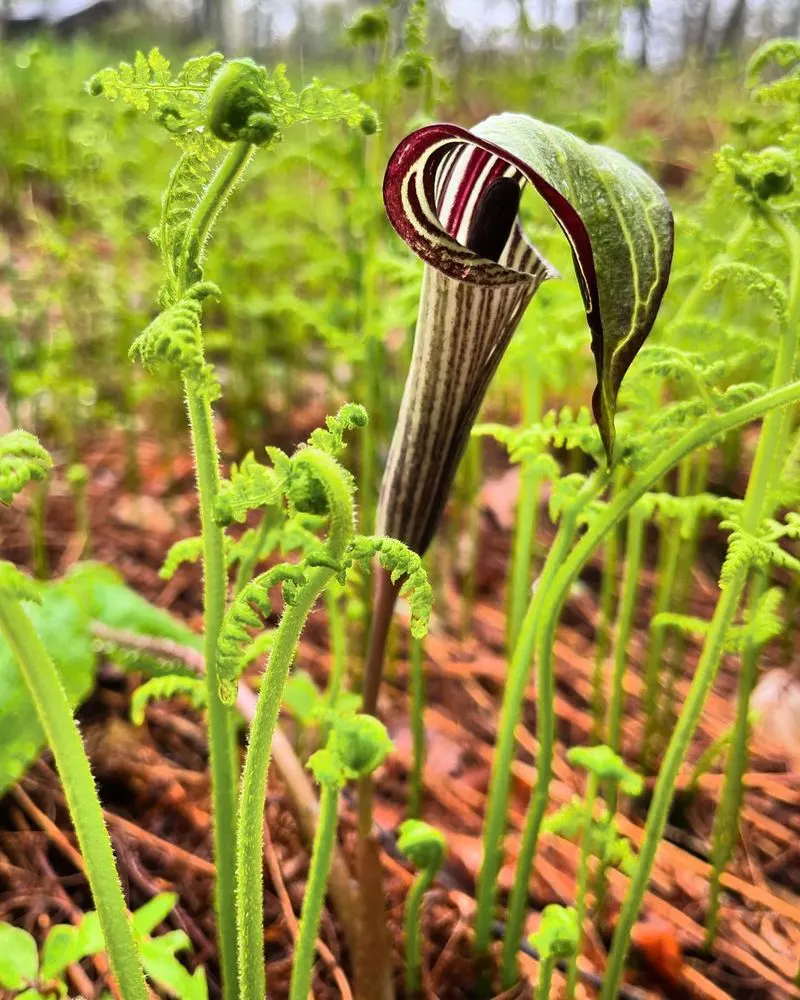
With an unusual hooded flower, Jack-in-the-Pulpit captivates with its architectural form. Native to eastern North American forests, this plant thrives in moist, shady areas, often found along woodland paths. Its intriguing structure and berry-like fruit add to its allure, creating a conversation piece in any garden. While it may look exotic, Jack-in-the-Pulpit is a testament to the diversity of local plant life. Its ability to adapt to different environments makes it a versatile choice for those seeking something unique and low-maintenance.
Cardinal Flower
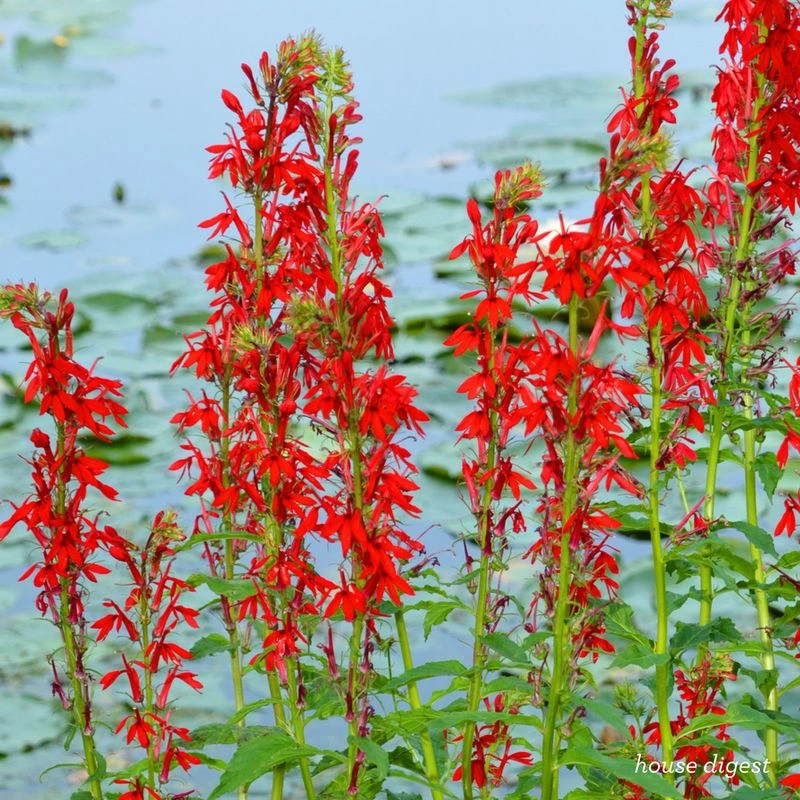
The Cardinal Flower’s tall red spikes stand as beacons of color in wetlands and along stream banks. Known for its intense red hue, this native plant is a favorite among hummingbirds, offering a rich source of nectar during blooming season. Its striking appearance belies its origins in North American wetlands, where it thrives in moist environments. The Cardinal Flower not only brings vibrancy to damp areas but also plays a crucial role in supporting local ecosystems. Its dramatic presence and ecological importance make it a true native treasure.
Sweetshrub
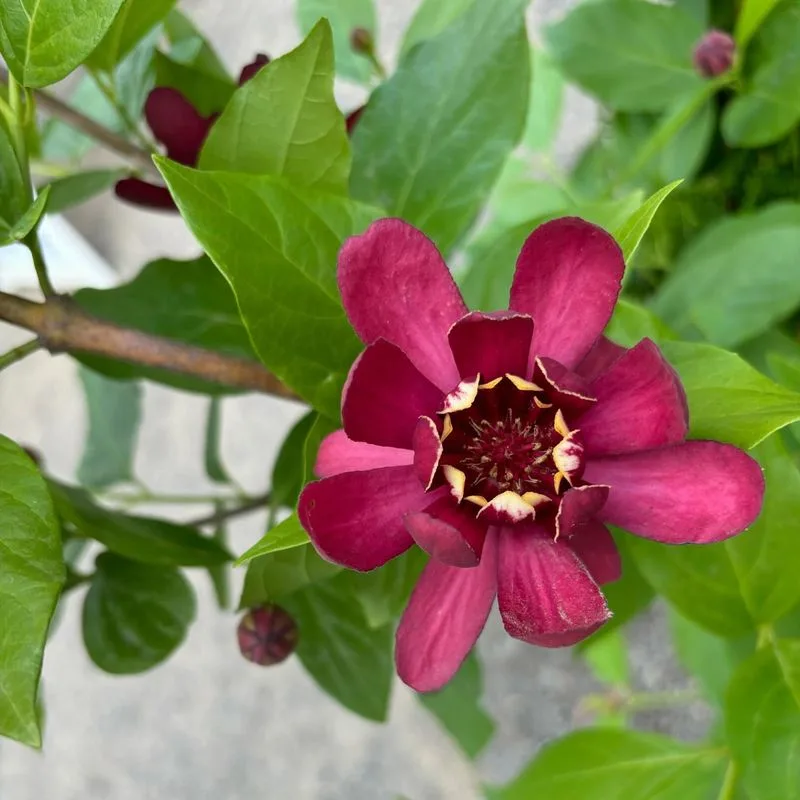
Sweetshrub enchants with its deep maroon flowers and a scent reminiscent of fruit and spices. Native to the southeastern United States, this shrub has long been valued for both its fragrance and ornamental qualities. Its glossy, dark green leaves provide a perfect backdrop for the dramatic blooms, making it a standout in any garden. Besides its beauty, Sweetshrub is adaptable, thriving in various soil types and light conditions. This plant’s aromatic appeal and visual charm make it a must-have for those seeking sensory delight in their garden.
Bluebells
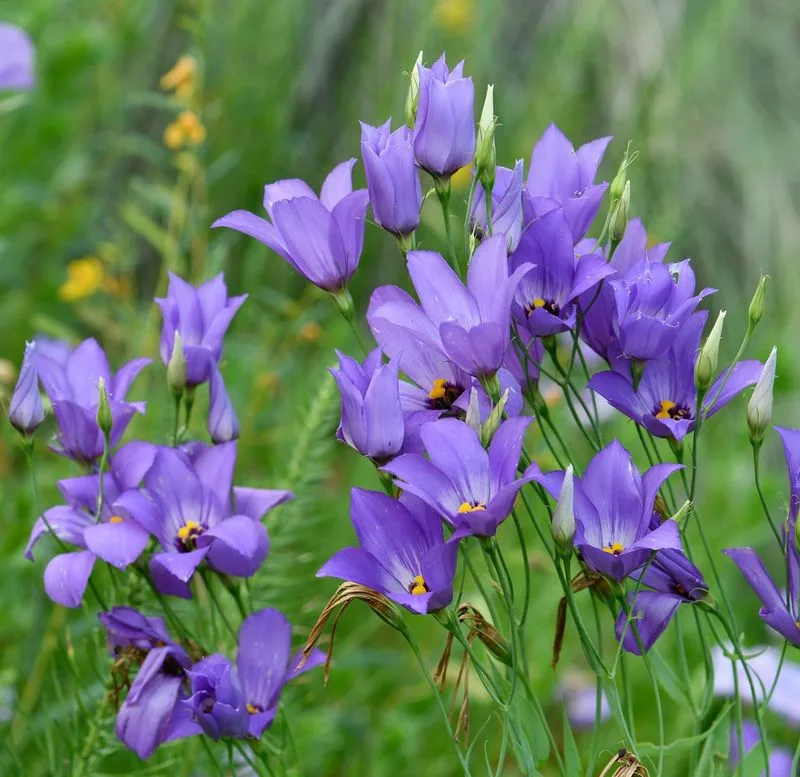
Bluebells create a serene sea of blue in springtime woodlands. These delicate flowers, nodding gently on slender stems, are native to the eastern United States and bring a touch of enchantment to shaded gardens. Their subtle fragrance and striking appearance attract pollinators, making them both beautiful and ecologically beneficial. As one of the first blooms of spring, Bluebells herald the season with grace and color. Their ability to thrive in shaded, moist environments adds to their allure, making them a favorite among gardeners seeking to recreate a woodland paradise.
Virginia Bluebells
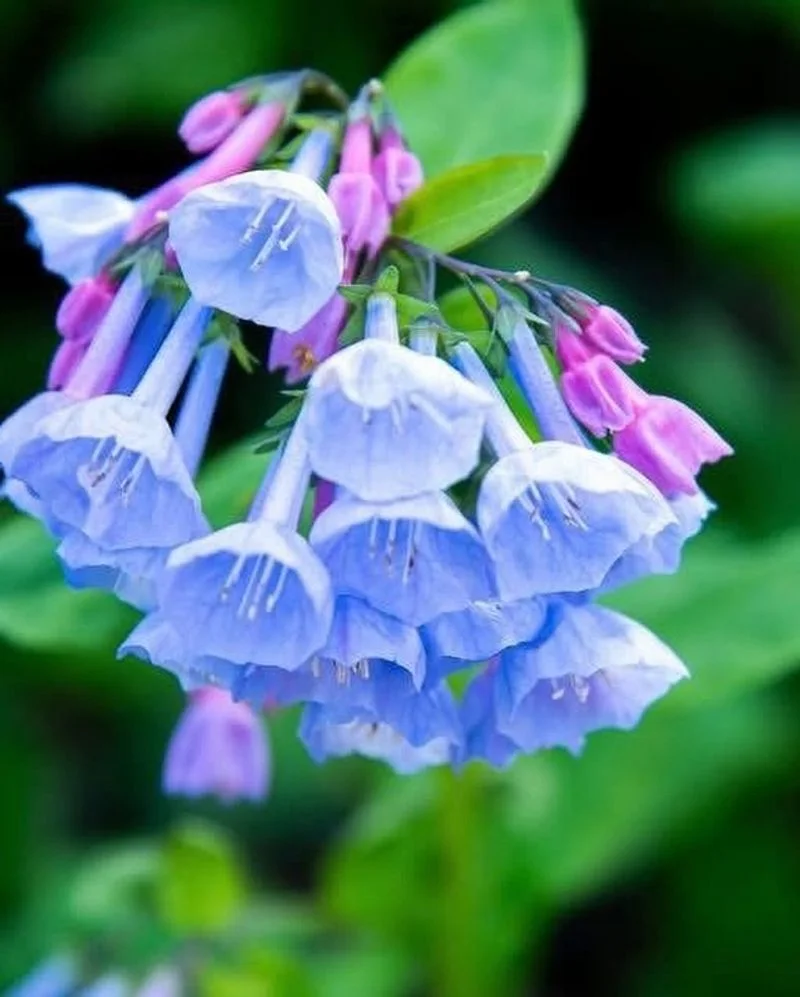
Virginia Bluebells paint forest floors with their enchanting hues of blue and pink. As these bell-shaped flowers mature, their colors shift, adding a dynamic element to spring displays. Native to moist woodlands across the eastern United States, they thrive in the rich, loamy soils of shaded areas. Virginia Bluebells not only appeal to the eye but also herald the arrival of spring, attracting bees and other early pollinators. Their ephemeral nature, blooming briefly each year, makes them a treasured sight for those who cherish seasonal changes.
New England Aster
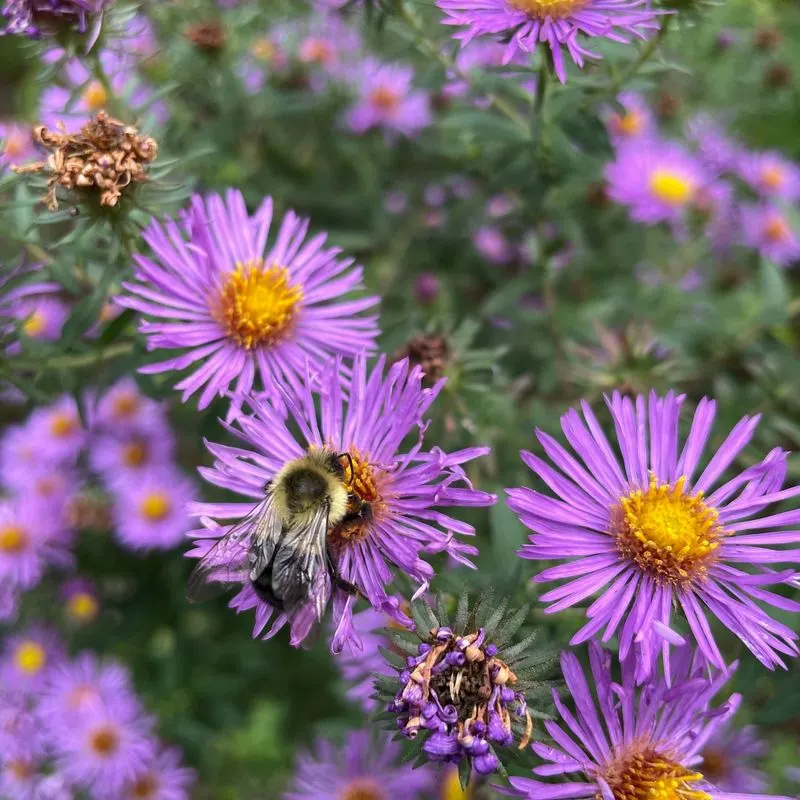
New England Aster dazzles with its vivid purple petals and bright yellow centers, creating a striking contrast in meadows and gardens. As a late bloomer, its flowers provide essential nectar for pollinators preparing for winter. This resilient native plant thrives in a range of conditions, from dry roadsides to cultivated garden beds. Its ability to endure and beautify the landscape has made it a staple in native planting schemes. The New England Aster’s vibrant display and ecological contributions ensure it remains a beloved choice for gardeners and conservationists alike.
Butterfly Weed
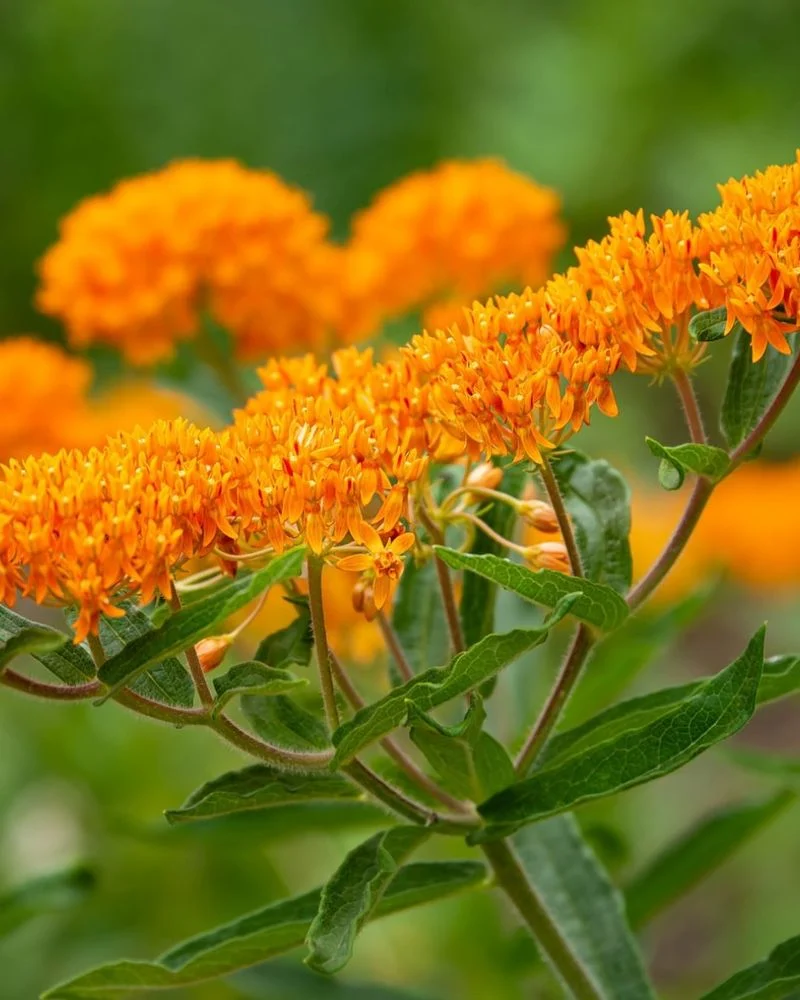
Butterfly Weed shines with clusters of vibrant orange flowers, a magnet for butterflies and other pollinators. Native to North American prairies and roadsides, this plant thrives in sunny, well-drained areas. Its deep roots make it drought-tolerant, reducing maintenance needs while stabilizing the soil. Known for its ecological value, Butterfly Weed supports monarch butterflies, contributing to their conservation. Its striking visual appeal and ecological importance make it a perfect addition for those looking to blend beauty and biodiversity in their gardens.
Purple Coneflower
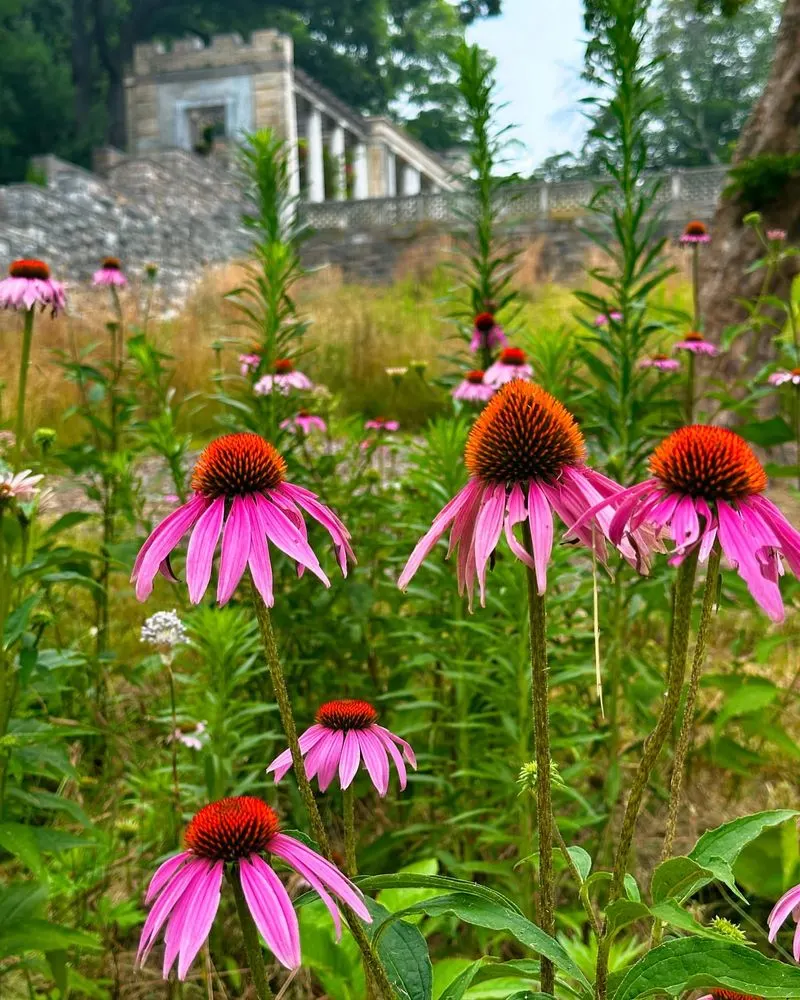
Purple Coneflower stands proud with its drooping purple petals and spiky orange centers, creating a striking focal point in gardens and meadows. This hardy perennial, native to the central and eastern United States, is celebrated for its beauty and resilience. Not only does it provide essential nectar for bees and butterflies, but it also boasts medicinal properties, historically used by Native Americans. Purple Coneflower’s adaptability to various soil types and conditions ensures its place as a beloved staple in native and ornamental gardens alike.
Western Columbine
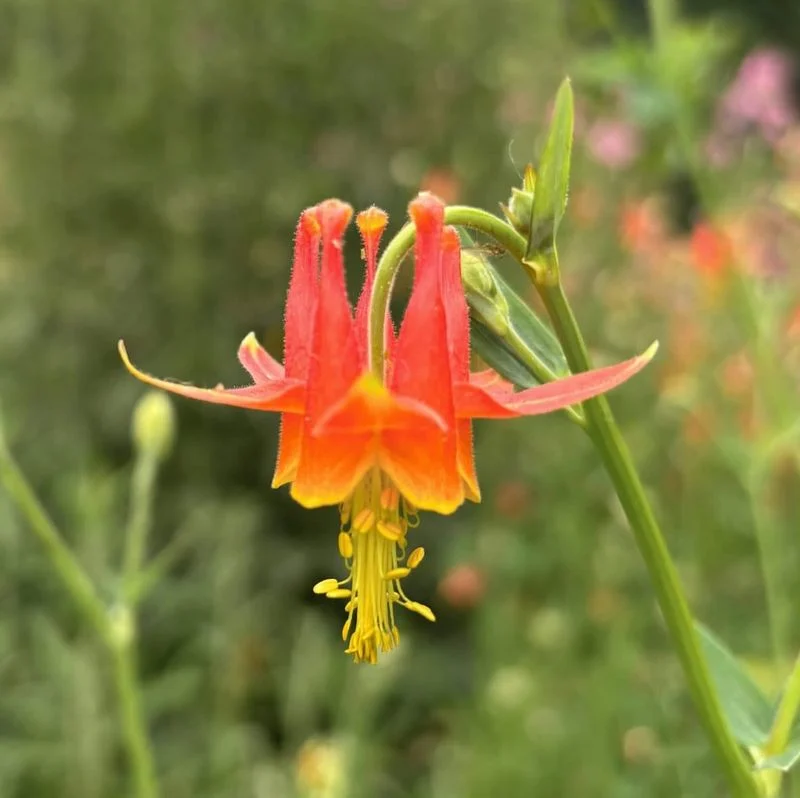
Western Columbine captivates with its delicate red and yellow flowers, nodding gracefully in breeze-kissed mountain meadows. Native to the western United States, this plant thrives in rocky, high-altitude environments, where its vibrant colors stand out against rugged landscapes. The unique flower shape attracts hummingbirds and other pollinators, contributing to its ecological importance. Despite its fragile appearance, Western Columbine is hardy and adaptable, making it a charming choice for gardens seeking to replicate nature’s splendor. Its presence adds both beauty and biodiversity to cultivated landscapes.
Mayapple
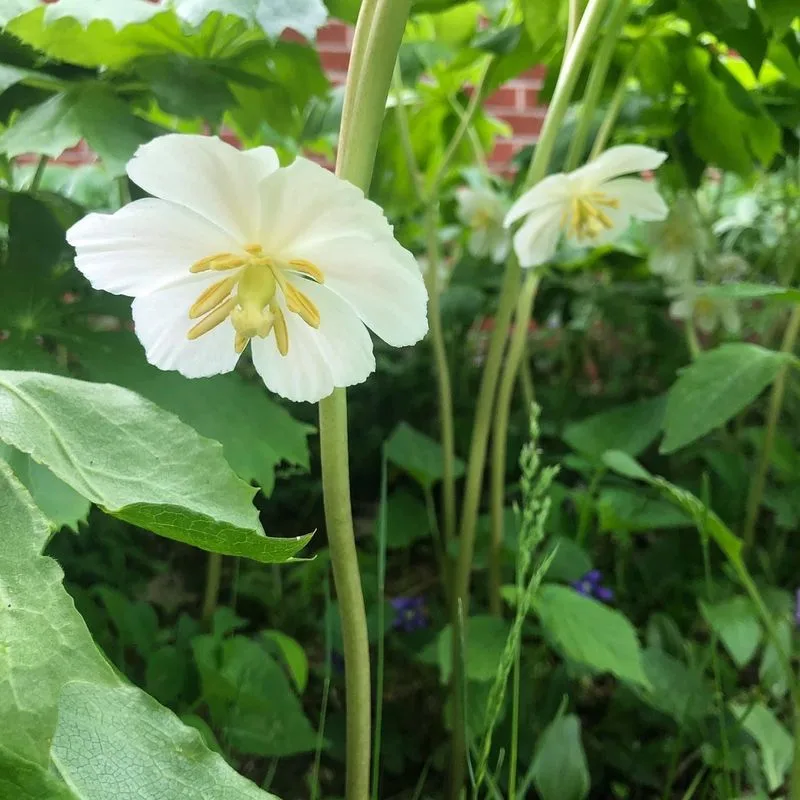
Beneath the shaded canopy, Mayapple spreads its large, umbrella-like leaves, offering a lush ground cover with an unusual twist. The plant’s single white flower, hidden beneath the foliage, adds a secretive charm. Native to the woodlands of eastern North America, Mayapple thrives in shaded, moist environments. Beyond its visual appeal, the plant has a rich history of use in traditional medicine, adding an intriguing layer to its presence. Mayapple’s combination of aesthetic and historical significance makes it an enchanting addition to native plant gardens.
Trillium
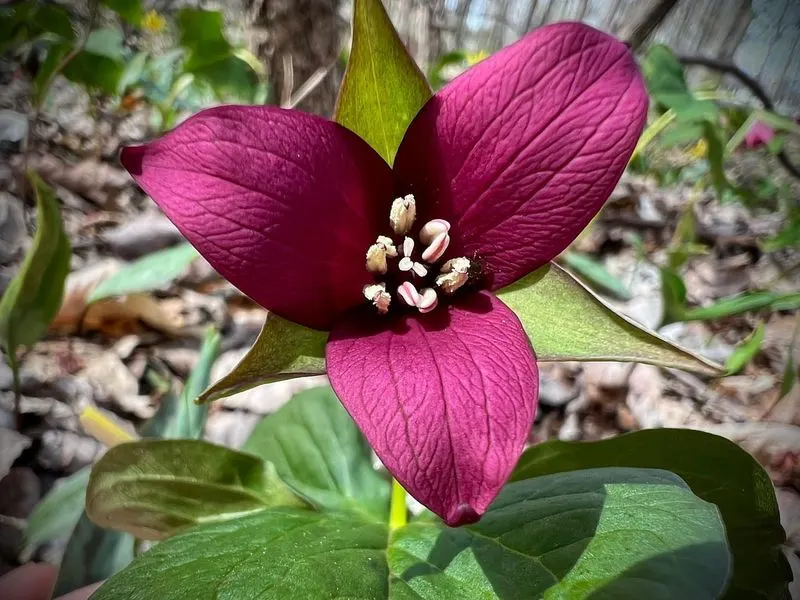
Trillium, with its three pristine white petals, emerges gracefully in the understory of forests each spring. This elegant wildflower, native to North American woodlands, is a symbol of purity and renewal. Its slow growth and specific habitat requirements make it a treasured find for nature enthusiasts. Beyond its beauty, Trillium plays a vital role in forest ecosystems, supporting a variety of pollinators. Its understated elegance and ecological importance underscore the value of preserving native flora, offering a glimpse into the delicate balance of natural habitats.
Jacob’s Ladder
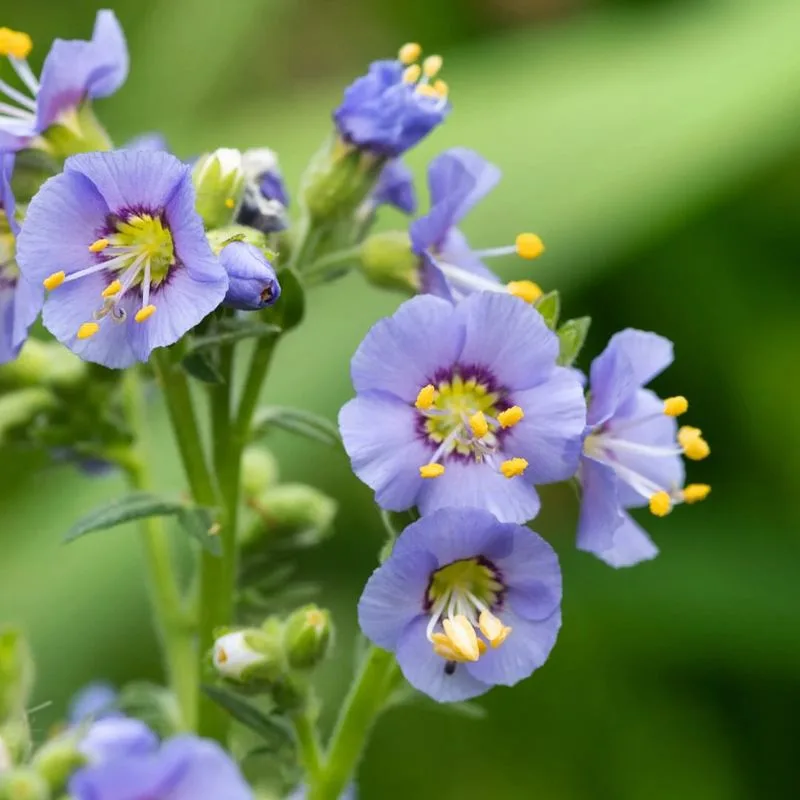
Jacob’s Ladder enchants with its clusters of blue-violet flowers and fern-like foliage, evoking the serenity of a woodland retreat. This delicate perennial, native to the cool, moist woodlands of North America, thrives in shaded gardens where it offers both beauty and ecological benefits. Its name, inspired by the biblical story of Jacob’s dream, reflects the plant’s graceful, ladder-like arrangement of leaves. Jacob’s Ladder not only adds aesthetic appeal but also supports local pollinators, making it a valuable addition to native and ornamental gardens.

